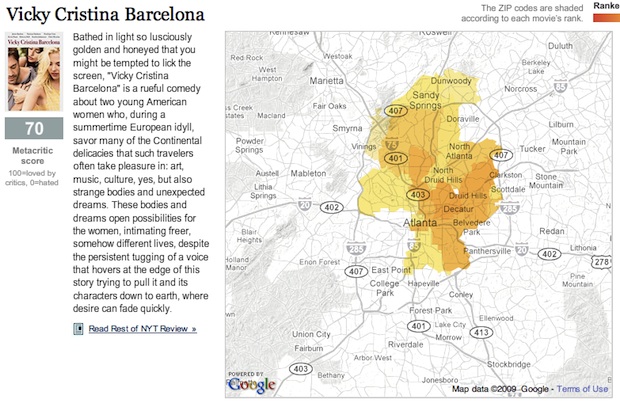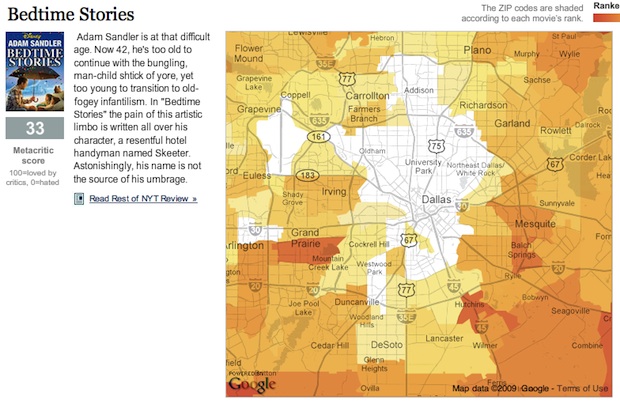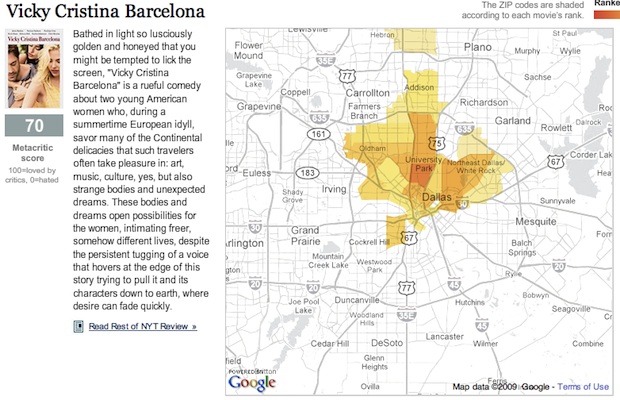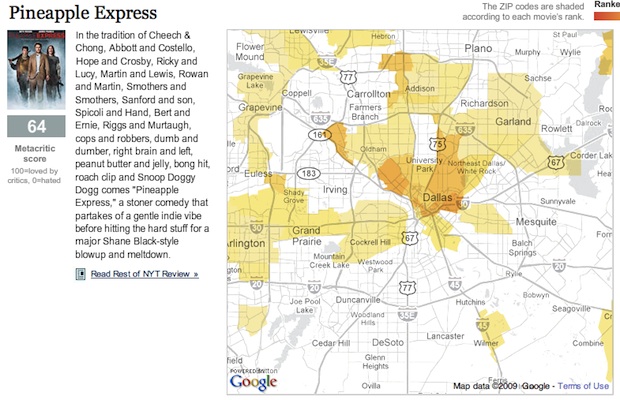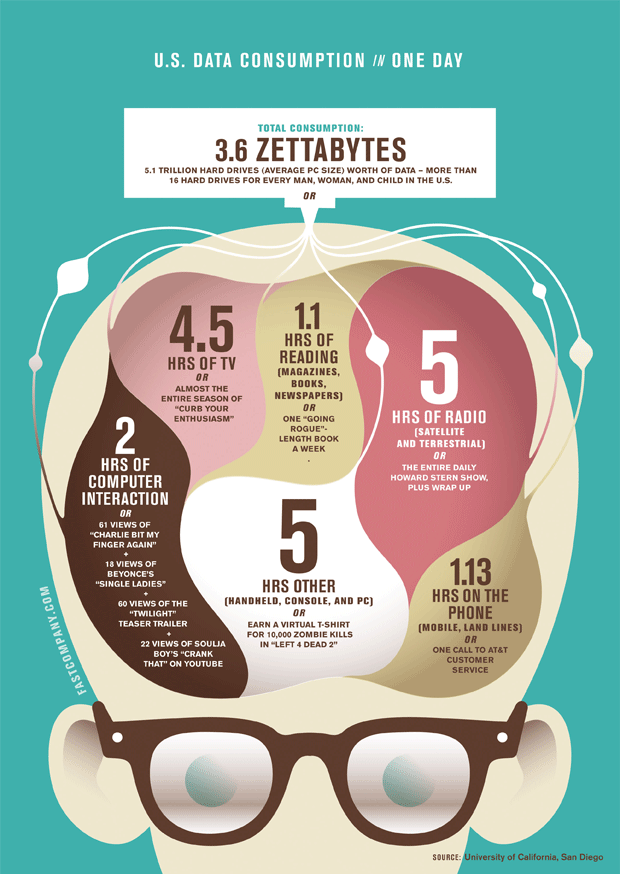Sunday, January 31
Thursday, January 14
modernized retro
Feed: marketing: Fast Company
Posted on: Friday, December 11, 2009 7:45 AM
Author: Cliff Kuang
Subject: Friday Fun: It's 1978. Here's Your YouTube User Manual.
| A thought experiment in retro aesthetics.
Okay so remember those user manuals that used to come with European electronics in the 1970s? (Stay with me here.) What if those were still around? And what if Web services like YouTube and Facebook all had them? Here's what they'd look like. Created by Stéphane Massa-Bidal, they're actually available as posters from RetroFuturs. [Via NowhereElse]
|
Enclosures:
| 4174195658_49742b6147_o.jpg (12 KB) |
new meaning to "crayon art"
Feed: design: The Design Inspiration
Posted on: Monday, January 04, 2010 5:06 AM
Author: The Design Inspiration
Subject: Crayon Sculpture Artist – Herb Williams
| Herb Williams was born in Montgomery in 1973, and then received a BFA in sculpture from Birmingham-Southern College. In 1998, he started his unique creation, that is, creating original sculptures out of individual crayons that may require as many as hundreds of thousands. He received The Joan Mitchell Foundation Museum Purchase Grant in 2004 and the Next Star Artist Award in 2008. Herb Williams is one of the only individuals in the world with an account with Crayola. His works have got highly laudation by numerous news papers and museums, and have reached many countries as America, China, England, Canada, Belgium, Germany, Australia, Croatia, and Japan. Are you curious about how great his works are? Let's have a look at them together.
|
the jitters
Feed: marketing: Fast Company
Posted on: Tuesday, January 12, 2010 5:05 AM
Author: Ben Paynter
Subject: This Caffeine Poster Charts Your Morning Buzz
|
Ever wonder why the guy who brings in Starbucks each morning seems to be about twice as perky as those schmucks toting plastic tumblers from Dunkin' Donuts or McDonald's? The answer: not all java is brewed equal. According to the chart above, one 16-ounce cup of Starbucks has more than 250 milligrams of caffeine--almost double the amount of its contemporaries. Though the chart itself has some flaws-- the numbers aren't adjusted to account for equal serving sizes, for instance-- it allows you to make some simple guestimates about the effectiveness of your brand of go-juice. Most importantly, it tells you how many espressos (or Jolts or NOS's if want to be laughed out of the boardroom) it takes to turn counter productive; Jitters occur around 300 mgs. [Those interested in how tea stacks up, click here.] Just remember that caffeine has about a five-hour half life, so sneaking out for that second coffee break the next time you have a case of the Mondays might actually make you feel more on edge. [Via CoolInfographics] |
Enclosures:
| thumb-beans_1.gif (24 KB) |
ohhh, the data people have on us...
Feed: marketing: Fast Company
Posted on: Monday, January 11, 2010 3:14 PM
Author: Cliff Kuang
Subject: Infographic of the Day: Who's Renting What (and Where) on Netflix?
| The suburbs love Jim Carrey and couldn't care less about movie critics. The cities love movie critics, Mad Men, and Woody Allen. Sometimes, infographics and data confound our stereotypes. And other times, they just reinforce them. Case in point: The movies that people rent. The New York Times has just published an amazingly detailed infographic, showing the most popular Netflix rentals by zipcode. You can view movies by straight up most popular--and also see exactly where critically lauded/loathed movies are rented most. The overarching lesson: Cities love thinky dramas praised by critics; the suburbs and exurbs like slapstick and Will Smith. For example, let's look at a city such as Atlanta, which has a fairly precise city/suburb division. Here's the popularity of Woody Allen's Vicky Cristina Barcelona:
And here's the popularity of Yes Man, starring Jim Carrey:
That same trend bears itself out in other cities. Dallas, for example. Here's Bedtime Stories, starring Adam Sandler:
Vicky Cristina Barcelona:
And the Seth Rogan stoner comedy Pineapple Express:
Now, there's probably a few things going on here--for one, you've got the pretensions/tastes of cityslicker versus suburban audiences. And that might be the biggest factor. What you see, time and time again, is that the audience for small, independent movies is most intense in the cities; the only critical successes that hit everybody are blockbusters such as Dark Knight. Meanwhile, the audience for low-budget groaners is overwhelmingly suburban. Both snobs and Rush Limbaugh fans can make of that what they will. But it's worth bearing in mind an underlying factor in all this: Who's got the kids. City folk have less of them, and they also rent more challenging fare. Suburbanites have more of them, and the kids really do seem to love Adam Sandler and Jim Carrey. Which might mean: You really better think twice before having kids (or double your Netflix subscription and number of TVs and bedrooms and income...). For more another infographics take on the strange tastes of cities, click here. For more Infographics of the Day, click here. |
Enclosures:
| JimCarreyJPEG.jpg (12 KB) |
Monday, January 11
new favorite: copy cat, I mean bird...
cameras, car alarms, chainsaws = a romantic prelude?? only in the wild, those crazy animals!!!
Thursday, January 7
FW: Your Personality, Summarized in a Typeface
Posted on: Thursday, January 07, 2010 9:41 AM
Author: Cliff Kuang
Subject: Your Personality, Summarized in a Typeface
| Design firm Pentagram provides a quick, fun bit of psychoanalysis for type geeks. If you've ever sat down with a type designer, what you quickly realize is that they rarely talk about fonts in purely aesthetic or even functional terms: They talk about assertiveness or calm or friendliness. In short, they talk about personality traits. It makes sense, then, that your personality could be translated into a typeface. And Pentragram has done just that, in this lovely microsite, What Type are You? (Password: Character) It takes you through four simple personality questions, guided by a faceless psychoanalyst. (The analyst's 1920s Bauhaus office setting is a witty touch.) After answering the questions, the analyst spits out one of 16 typefaces, and an explanation about the design and how it exemplifies the characteristics you laid out. There's even a bit of history about each, and a list you can see of who else had the same results. (For example, "Virginia Heffernan," which just might be The New York Times's TV critic, is Bifur.) On a vaguely related note, since we're Lady GaGa obsessed: |
Fwd: America Hungry, Need Data
Feed: marketing: Fast Company
Posted on: Wednesday, January 06, 2010 5:43 PM
Author: Maccabee Montandon
Subject: America Hungry, Need Data
|
One upside to the downturn is that the average American has a smaller food budget these days, so perhaps we can finally get our arms around the enormous domestic weight problem. Even our Super Models are getting skinnier! But while our hunger for hamburgers may be facing a forced downsizing, our insatiable appetite for information continues to balloon. Just how big is this lust for bytes? According to a new study by the University of California, San Diego, from 1980 through 2008 the total number of bytes bitten by Americans has upped by 6% per year and now stands at an incredibly huge sounding 3.6 zettabytes. (Or one billion trillion bytes, if that's easier to imagine.) The Upswing is, of course, interested in unlikely economic indicators of good news and this is surely one. How lean, after all, can the times be when we continue to gorge on data? And someone has to produce all this content, which means the future of electronic innovation appears to be rather secure. Here we break down what 3.6 zettabytes--or 34 gigabytes a day--means in terms of daily consumption. [Data via Bits]Infographic: Rob Vargas |
Enclosures:
| Upswing-thumb-data.gif (17 KB) |








































